Signs You Might Have Mold – What to Look For in Prince George’s County
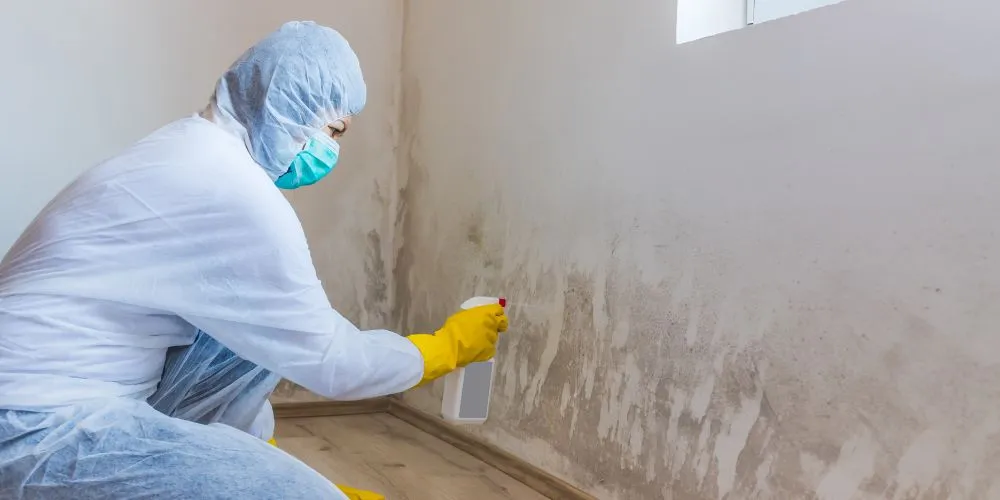
Mold can be a hidden danger in homes throughout Prince George’s County, often lurking where it’s not easily visible. Knowing how to detect mold is essential for maintaining a healthy living environment.
In this guide, we’ll cover the common signs of mold, areas in homes prone to growth, and effective strategies for identifying and remediating mold issues. By staying informed, homeowners can protect their health and property from the negative effects of mold, making sure their spaces remain safe and comfortable.
So, let’s dive in!
Understanding Mold Detection

Mold can be a tricky intruder, often hiding in places you wouldn’t expect. Mold detection in Prince George’s County means carefully inspecting moisture-prone areas in your home, like basements, bathrooms, and kitchens, where humidity levels tend to be higher. It’s not just about checking the obvious spots—mold loves to lurk under sinks, behind appliances, and even within upholstery that looks clean at first glance.
Did you know dust can be a sign of mold? When mold spores circulate, they often mix with household dust. If you’re noticing an extra layer of dust, especially in corners, on surfaces, or on plastic containers and décor with signs of moisture, or your allergy has been triggered, mold may grow out of sight.
Mold thrives in hidden spaces, which is why a thorough inspection is crucial. Keep an eye out for musty odors, discoloration on walls, ceilings, or fabrics, and any signs of excess moisture. Spotting these red flags early can help you take action before mold spreads, protecting your home’s air quality and overall health.
Common Mold Signs in Prince George’s County
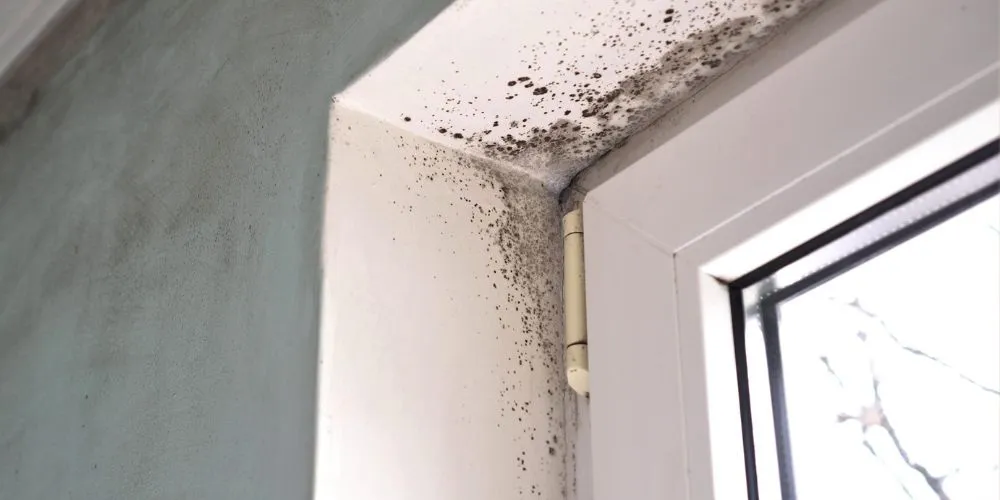
Identifying visual indicators of mold is the first step in maintaining a healthy home. Homeowners should be vigilant for discoloration on surfaces and walls, as these can signify mold growth.
Musty odors are another warning sign, often indicative of hidden toxins that could trigger cough, asthma, or even shortness of breath. Monitoring humidity levels also plays a crucial role in mold detection, as damp environments can attract mold, making it essential for landlords and residents to stay informed.
Identifying Visual Indicators of Mold
When identifying visual indicators of mold in Prince George’s County, homeowners should look for discoloration on walls, ceilings, and even furniture, which can often signal hidden mold growth. A musty odor may accompany these stains, suggesting that mold is not just a visual concern but a health risk, potentially leading to fatigue and lung irritations.
Taking swift action, such as using a disinfectant for minor areas or considering professional mold remediation for larger infestations, can significantly improve indoor air quality and the home’s overall health.
Recognizing Musty Odors and Their Implications
Musty odors often indicate indoor mold growth in homes across Maryland, signaling hidden contamination in dark, damp areas. When these distinct smells linger, it’s essential to investigate further, as they may point to a more significant mold issue.
Reducing moisture levels with a dehumidifier can help prevent mold from thriving, improving air quality and protecting overall health within the home.
Monitoring Humidity Levels
Monitoring humidity levels is essential for Prince George’s County homeowners to prevent mold growth. Keeping indoor humidity below 60% helps mitigate water damage and reduces the likelihood of mold flourishing in hidden areas like ceilings or basements.
With the help of regular cleaning and a dehumidifier, you can create a healthier environment, as high humidity can encourage mold, much like hay attracts moisture, leading to potential health concerns down the line.
Mold loves to linger where moisture thrives. Next, explore the spaces in your home that might welcome this unwelcome guest.
Areas Susceptible to Mold Growth
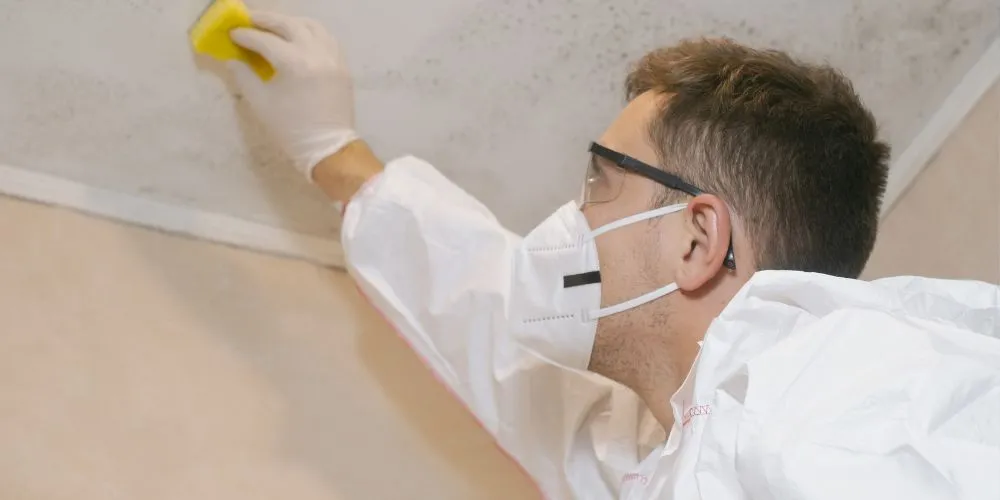
If not properly managed, moisture-prone interior spaces, such as bathrooms and basements, are prime candidates for mold growth. Poor ventilation can exacerbate this issue, creating damp conditions that foster mold.
Additionally, outdoor humidity in Northern Virginia and appliances that release moist air indoors can increase the risk of mold growth. Understanding these factors helps homeowners identify problem areas and maintain proper ventilation and sanitation to prevent mold buildup.
Moisture-Prone Interior Spaces
Moisture-prone interior spaces, such as bathrooms and basements, are frequent hotspots for mold problems in Prince George’s County. These areas often have limited ventilation, making them vulnerable to fungus growth, especially after water leaks or high humidity.
Inspecting your roof for leaks and ensuring proper drainage around your home is essential to prevent moisture buildup, which can lead to serious health issues from mold exposure. Regular cleaning and humidity control are key to maintaining a healthier indoor environment.
Outdoor Factors Contributing to Mold Growth
Mold growth in Prince George’s County is heavily influenced by outdoor environmental factors, particularly humidity, rainfall, and poor drainage. Seasonal humidity and moisture buildup on surfaces like roofs, siding, and outdoor tiles create the perfect conditions for mold to thrive.
Additionally, air conditioning units can contribute to indoor mold problems if they fail to properly remove excess moisture. Poor ventilation, clogged gutters, and standing water around the home further increase the risk. Homeowners can reduce mold growth by ensuring proper drainage, regular roof maintenance, and improved airflow in and around their homes.
Mold thrives in hidden corners, but fresh air can change that. Understanding how ventilation works is key to keeping mold at bay.
The Role of Ventilation in Mold Prevention
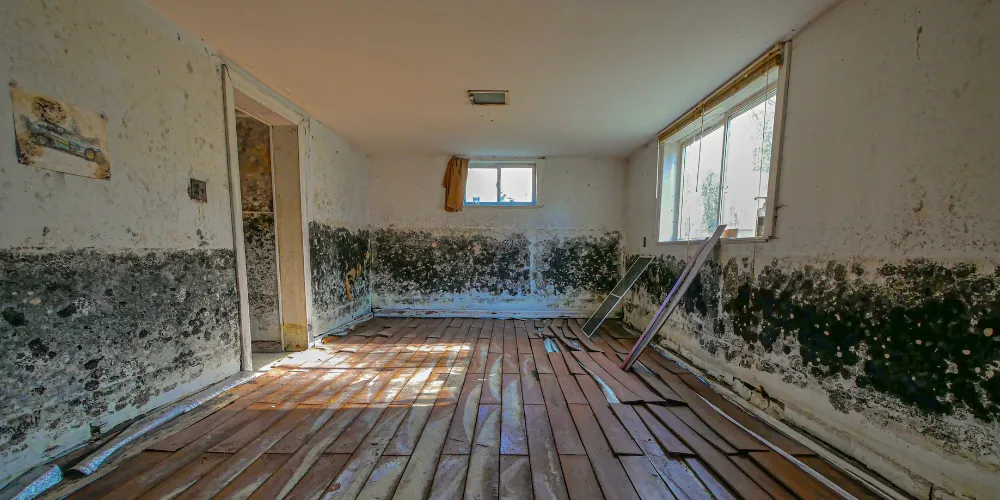
Effective air circulation prevents mold and mildew growth in Prince George’s County homes. To ensure proper indoor air quality, you should evaluate your ventilation systems, including those above sinks and throughout living spaces.
Similarly, regular vacuuming and drywall inspections can help eliminate moisture pockets, significantly reducing the risk of mold issues.
Importance of Air Circulation
In Prince George’s County, proper air circulation plays a critical role in preventing the proliferation of mold spores that can lead to serious health issues. Stagnant air creates a perfect breeding ground for mold, which can develop alongside unwanted odors and disease-causing agents, including sewage bacteria.
By implementing effective ventilation strategies—such as utilizing exhaust fans in bathrooms and kitchens—you can greatly reduce humidity levels and lower the risk of mold growth, enjoying a fresher and healthier living environment.
Effective Ventilation Systems
Effective ventilation systems are essential in reducing moisture levels that can lead to mold growth in areas like bathrooms and basements. Proper airflow helps to remove humid air and replace it with drier air, minimizing the chances of mold establishing itself.
Homes in Prince George’s County can benefit from regular mold testing, especially in moisture-prone zones where grainy dust and musty odors are common signs of a potential problem.
Ventilation protects homes from mold, but danger still looms beyond the walls. Understanding the health risks tied to mold exposure reveals why every breath matters.
Health Implications of Mold Exposure
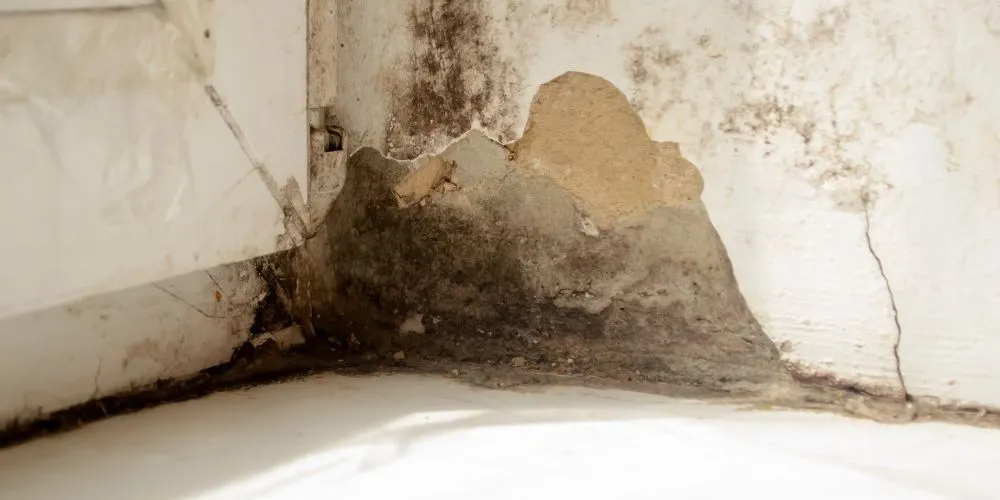
Mold exposure can lead to health concerns for individuals, particularly in homes with hidden mold spores. Recognizing symptoms of mold allergies is important, as they can manifest through respiratory issues and skin irritations.
Recognizing Symptoms of Mold Allergies
Recognizing symptoms of mold allergies is integral for homeowners in Prince George’s County, as these reactions can indicate underlying toxicity from mold exposure.
Common signs include respiratory issues, such as coughing or wheezing, and skin irritations that can arise after contact with organic matter, especially wood affected by mold.
Long-Term Health Effects
Long-term exposure to mold can lead to serious health problems, especially in environments where carpets retain moisture and trap mold spores. Persistent mold issues may result in chronic respiratory conditions, skin irritations, and even more severe health concerns, such as asthma or mold-related illnesses.
So, all homeowners should be proactive in maintaining their living spaces, making sure their carpets are kept dry and clean to prevent the dangerous effects of unseen mold lurking beneath the surface.
Mold’s presence can quietly disrupt lives, leaving behind more than just a stain. Understanding how to spot and assess this intruder is the first step toward reclaiming a healthy home.
Steps for Mold Detection and Assessment
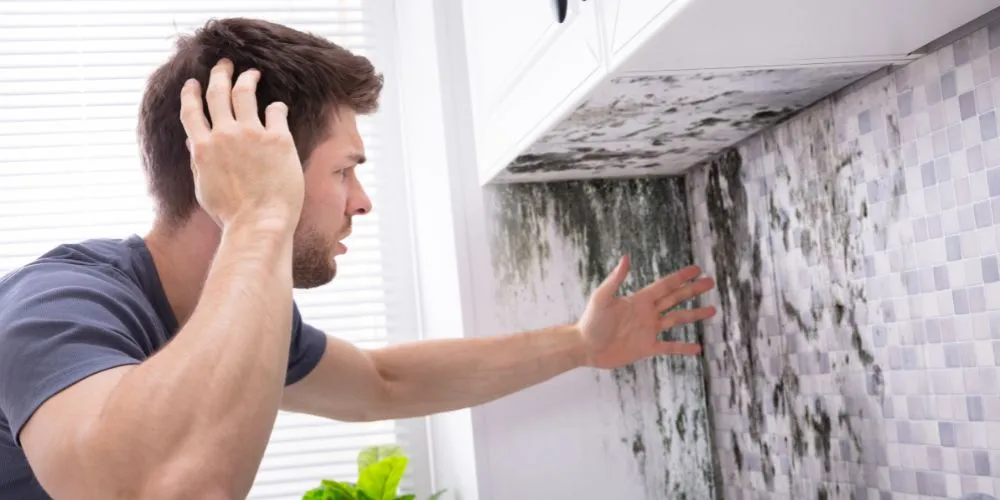
Taking early steps in mold detection is essential for maintaining a healthy home in Prince George’s County. DIY mold testing methods can help identify potential issues early while knowing when to call in professionals for a thorough mold inspection is just as important—especially for larger or hidden infestations.
Combining both approaches allows residents to stay ahead of mold problems and ensure their homes remain safe from unseen pollutants.
DIY Mold Testing Methods
DIY mold testing methods can empower Prince George’s County homeowners to take charge of their indoor air quality. Simple techniques like using a clean, damp cloth to wipe suspected moldy areas can reveal stains that warrant closer examination.
Additionally, you may consider using mold testing kits available at local hardware stores, which can offer insights into hidden mold spores lurking in your homes.
When to Consult Professionals for Mold Inspection
Noticing musty odors that won’t go away or experiencing unexplained respiratory issues? It might be time to call in a professional mold inspector. If you spot discoloration on walls or ceilings, especially in moisture-prone areas like bathrooms or basements, getting an expert’s opinion is a smart move.
Hidden mold can spread fast, and professionals can pinpoint the problem, recommend the best course of action, and help keep your home safe and healthy for the long run.
Once the mold is found, understanding how to tackle it becomes essential. In the next section, effective strategies await to keep homes fresh and safe.
Remediation Strategies for Mold Issues
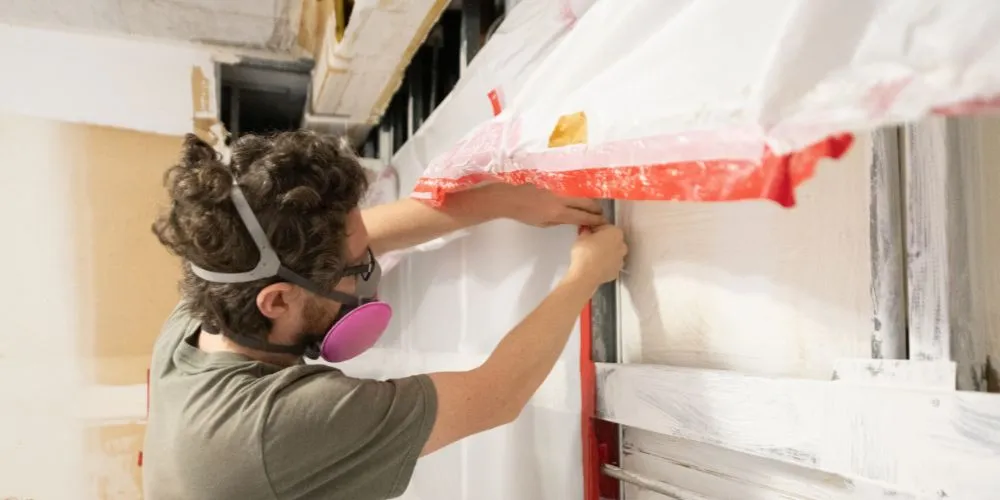
Safe cleaning techniques are essential for mold removal in Prince George’s County homes. Proper methods eliminate existing mold and lay the groundwork for effective prevention measures. Homeowners will gain insights into straightforward approaches for cleaning and discover practical tips to maintain a mold-free environment, ensuring long-term health and safety.
Safe Cleaning Techniques
When tackling mold issues, you should begin by using safe cleaning techniques that effectively eliminate mold without causing harm. A simple mixture of water and white vinegar can prove beneficial for smaller areas, as vinegar naturally kills many mold species.
For more serious problems, applying a commercial mold cleaner designed for home use can help, but following the manufacturer’s guidelines is the key to ensuring safety and efficiency during cleanup.
Prevention Measures to Avoid Future Growth
To prevent future mold growth, homeowners must maintain low humidity levels and have proper ventilation throughout their homes. Regularly checking for leaks in plumbing, roofs, and basements can mitigate moisture issues before they escalate.
Implementing simple practices, such as using exhaust fans in bathrooms and kitchens and keeping gutters clear of debris, can contribute to a healthier indoor environment and reduce the risk of mold establishment.

Take Control of Mold Before It Takes Over
Mold is more than just an eyesore—it’s a threat to your home and health. By staying proactive with regular inspections, proper ventilation, and moisture control, you can keep your living space safe, clean, and comfortable. But when mold becomes a bigger problem, professional help is the best solution.
At Su’Coy Heating, AC & Duct Cleaning, we don’t just find mold, we eliminate it at the source. Our expert team provides thorough mold inspections, effective remediation, and long-term prevention strategies. Don’t wait for mold to spread, protect your home and health today!







